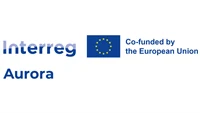DeHigh ‑ electrification of work vehicles with low voltage technology
Many work vehicles still use internal combustion engines despite sustainability demands. The DeHigh project, a collaboration between Mid Sweden University, the University of Oulu, and the Arctic University of Norway, aims to develop a cost-effective 48V low-voltage electrification solution.
Electrification of vehicles is a key part of the transition to a more sustainable future, but traditional high-voltage solutions are often expensive and complicated, which can be a barrier for many small and medium-sized businesses.
The DeHigh project offers a solution through the development of a 48V low-voltage driveline that is both more affordable and easier to maintain. This technology could be adapted to various types of work vehicles, from forestry machines to different kinds of boats. Such technology would also make it easier for small and medium-sized companies to electrify their work vehicles without incurring excessive costs.
The project includes practical testing and simulations in real work environments, including the extreme weather conditions that can occur in Northern Europe. By collaborating with over 20 companies and utilizing the research environments at the participating universities, the technology can be developed to function in the specific conditions faced by various industries.
Project goals:
DeHigh aims to create a design for low-voltage drivetrains that can be replicated, are cost-effective, and easy to implement. The objectives are to:
- Increase safety – lower voltage means fewer risks during handling and maintenance, which is particularly important for smaller companies lacking expertise.
- Reduce costs – compared to high-voltage solutions, low-voltage components are cheaper and easier to produce, making it possible for more companies to participate in electrification.
- Promote flexibility in electrification – by enabling interchangeable batteries and shorter operating times, companies can tailor the solution to their specific needs.
The project includes extensive simulations, vehicle testing in Arctic conditions, and analysis of how drivetrains perform during different work cycles. To disseminate results and create long-term impact, the findings will be presented through seminars, technical reports, and communication events.
Facts
Project period
250301-280228
Research centers
Research groups
Project leader

Project members




Funders


